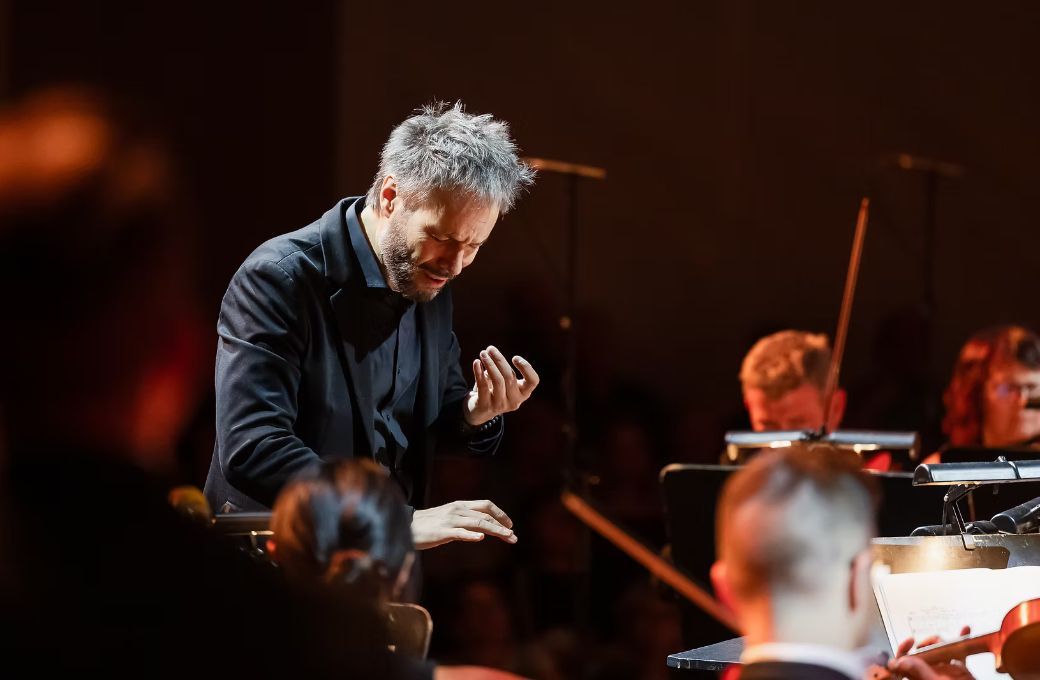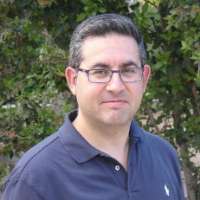“A space for creation.” This is how conductor and Alicante native Josep Vicent describes the ADDA Simfònica, one of Spain’s newest orchestras. Based at the Auditorio de la Diputación de Alicante, the group was born first as a personal project of its conductor and artistic director. With an initial complement of 43 musicians, the orchestra made its debut in December 2018 with a programme of milestone symphonies: Beethoven’s Fifth and Tchaikovsky’s Fourth. In the years since, it has only grown in confidence and ambition.

Talking with Vicent, we discussed the current season, but I also wanted to find out what has enabled the orchestra to obtain such a prominent international profile in just six seasons. During this time, audiences have also grown. Among them are the numerous “high-ranking European Union officials who live in the city”, Vicent says. Besides, Alicante-Elche Airport is the busiest in the Valencian region and one of the most important in Spain. It provides the ADDA with “direct connections to major European cities every day in around two hours”. In short, it is a great opportunity to reach a wide, “eclectic, analytical and very demanding audience, made up of a 1000 subscribers for a capacity of 1300 seats”.
Still, the close proximity of Valencia, with its own busy musical life, doesn’t determine Vicent’s thinking when it comes to programming. His interest lies not “in programming from a competitive position, but from the enthusiasm of creating our own content. We are both close enough and far enough away for all of this to be a good thing”.
The applause is still echoing from ADDA Simfònica’s opening concert of the 2025–26 season, led by Vicent earlier this month. The programme featured a repeat performance of Tchaikovsky’s Symphony no. 4, along with Chopin’s Piano Concerto no. 2, performed by Martín García García, and the world premiere of Ítaca by Ximo Cano. “He is a composer also from Alicante who connects very well with audiences in our region,” Vicent says, “and who has many followers in the world of bands. We have known each other for many years and this closeness has allowed us to develop the season opener with great intimacy, thinking about how this work, which is conceptually solid and at the same time connected with popular culture, should serve as the basis for everything that comes after it – bearing in mind that we will close in June with Mahler’s Titan.”
Vicent’s season really is a kind of “Voyage to Ithaca”. When I ask what ADDA offers to music lovers that no one else does, he replies: “a desire for adventure. In my programming, when combining concerts, I try to set a curatorial guideline, as in a painting exhibition. An existential journey will take us through different geographies and the music that defines or explores them. We will share the surprise.” For example, with Zhou Tian’s Concerto for Orchestra, he aims to show what is happening in Asia. “A world that is perhaps more open-minded than Europe, which looks at things from a more innovative perspective.” It will be conducted by Darrell Ang, from Singapore, “who has a very good relationship with Tian’s music.”
But the journey Josep Vicent was talking about is not only conceptual or metaphorical – it is also physical and geographical. From 29th October to 8th November, ADDA Simfònica will tour Japan. The orchestra plays several major concert halls: Fukuoka Symphony Hall, Shunan-shi, Muza Kawasaki, Mie-ken at the Sogo Bunka Centre, Suntory in Tokyo and Symphony Hall in Osaka. This tour is underpinned by experience gained on previous tours to France, Germany and Slovenia, which have helped the ensemble to mature.
“Organising tours from the outset generates a series of very interesting and productive internal dialogues, both in practical and programmatic terms,” Vicent says. “The experience helps us define what we want as an ensemble and also learn to say ‘no’ sometimes. We are going to Japan with great enthusiasm. But, on the other hand, it is a big effort for the small management team we have – they are only three people, but very dedicated.”
The musicians will be accompanied by pianist Martín García García – “very well known there”, notes Vicent – and Japanese guitarist Kaori Muraji. Works by Ravel, Falla, Rodrigo and Rimsky-Korsakov are on the programme, which are pieces that “will allow us to showcase the symphonic music that the orchestra can perform, as well as our commitment and sincere love for the Spanish repertoire”.
On their return in December, Leticia Moreno joins the orchestra to play 1001 Nights in the Harem, a rarely performed concerto for violin and orchestra by Fazil Say. “It is contemporary, ethnic music, steeped in Turkish folklore,” Vicent says, “and at the same time, linked to Romanticism. A very important premiere in Spain will be Liberi Tutti, a concerto for string quartet and orchestra by Nicola Campogrande, which is the result of a long-term collaboration with ADDA Simfònica. I conducted the world premiere last June with the Milan Symphony Orchestra and Meta4 Quartet, which will also premiere it here.”
Vicent does recognise an absence of women composers in this year’s season. “When programming, I try to let this situation flow naturally. Sometimes my programmes lean a little more to one side and sometimes to the other. It is true that women are under-represented in many areas, which is why this time we have more female soloists than male soloists and conductors such as Joana Carneiro.”
Another of ADDA Simfònica’s ventures is the digital series Visual Album, a set of video performances of repertoire strikingly oriented towards modern music of the 20th and 21st centuries music – accounting for more than 60 per cent. This is unusual. Beethoven and Tchaikovsky are the only two names from the Romantic period appearing more than once, while other composers featured are Ravel, Falla, Stravinsky, Prokofiev, Shostakovich, Berio and John Adams.
In this regard, Vicent considers it “a responsibility to show these pieces, taking on the challenge of their difficulty. Berio’s Sinfonia, for example, involves a great risk because it combines arid geographies with others that are not so much. Besides, as a musician, it is a pleasure to organise music that is a little more abstract and create a structure for it that works in the same way as an eight bars phrase from Mozart”.
“I have been in love with the music of John Adams since I played percussion at the Concertgebouw in Amsterdam,” Vicent adds. “One day, Adams came to conduct Short Ride in a Fast Machine, a piece that is quite well-known now, but unheard of at the time. When we started playing it, I felt something in my stomach... I thought: finally, someone has found the bridge between the dryness of American minimalism and European romanticism. I was so blown away that I couldn’t stop programming it.”
As well as focusing on unusual or less-programmed repertoire, ADDA Simfònica are also working on renewing the concert format. It is, Vicent acknowledges, something that has changed throughout his career. But he likes, he says, “to smooth out the rough edges of the overhead white light. If the stage is a little warmer, it helps me. If a creator like Sagar Forniés has imagined a wonderful comic strip to illustrate Rodrigo’s A la busca del más allá and tells the story of the work, I am happy to include it”.
These are experiences learned in other fields that he combines with the orchestra, such as the musical direction of shows created by La Fura dels Baus or some by Cirque du Soleil. “There I learned that the performance of a work is not at odds with beautiful lighting, with an orchestra that is appealing from a visual point of view. At the ADDA, theatrical moments coexist with extremely subtle and neutral moments.”
Finally, the conversation touched on social comitmment of the orchestra: “At ADDA, we like to recreate a sound space in each of the towns we visit in the province, whether in an auditorium or in the town square if there is no hall available. I would say that we have been to more than 80 per cent of them, either with me as the conductor or with other guest colleagues. We also go to hospitals, nursing homes and shelters. It’s a project in which the musicians get personally involved, and it’s just as exciting as any concert in our hall.”
ADDA Simfònica tour Japan from 29th October to 8th November.
See upcoming events from ADDA Simfònica.
This article was sponsored by the Auditorio de la Diputaciòn de Alicante.
Translated from Spanish by Katia de Miguel.


